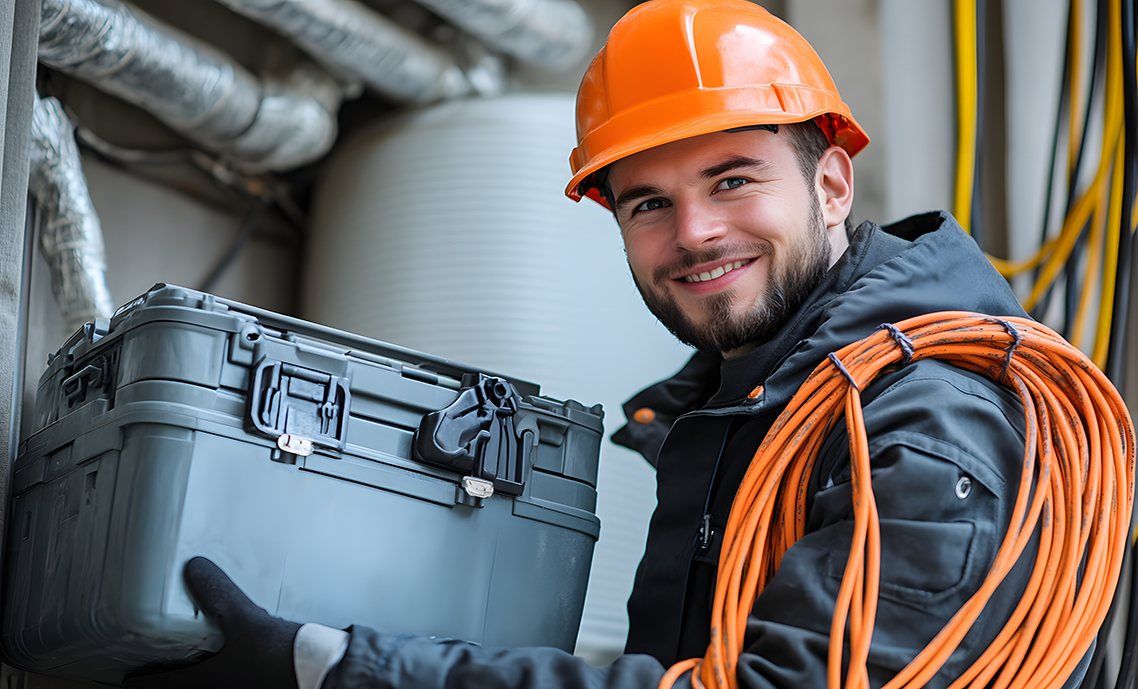
The How To's of J Hook Installation
J Hooks provide a reliable horizontal pathway for routing small to medium cable bundles, ensuring organization and accessibility. Proper installation is essential for preserving pathway integrity and maximizing uptime, helping you avoid common pitfalls that could lead to performance issues. By following best practices for spacing, weight distribution, and bend radii, you can optimize cable management, minimize strain, and enhance overall system longevity. These insights equip you with the knowledge needed to create a durable and efficient cable routing solution
Best Practices for J Hook Installation
Cable handling
J Hooks can be used to support any type of limited-energy cable. They are designed to provide a stable and organized pathway for cables, preventing them from being pinched, damaged, or interfering with other systems.
J Hooks must have adequate support to withstand the pulling of cables. Additionally, handle the cables with care to avoid kinking, pulling too hard, or damaging the insulation or shielding.
J Hook spacing
The ANSI/TIA-569, Telecommunications Pathways and Spaces requirement says j hooks should be spaced no more than 5 feet apart to adequately support and distribute the cable’s weight.
Spacing j hooks further than 5 feet apart may cause the cables to sag. This can cause abrasion, stress the cable, create safety hazards and potentially interfere with other cables and equipment.
Placing j hooks to close together increases material and labor costs. And it can create unnecessary complexity by crowding pathways and making cables difficult to access and trace.
J Hook installation
J Hooks must be suspended from or attached to the structural ceiling or walls with hardware or other installation aids specifically designed to support their weight. Steel, masonry, independent rods, independent support wires or other structural parts of the building are to be used for cable support attachments to maintain appropriate cable bend radii to maintain performance.
J Hook installation should not be installed in a manner that requires cables to bend sharply as that can damage the cable and impact performance. Avoid installing in tight spaces, or where cables must be routed around existing structures.
Note that rods or wires that are currently employed for other functions (e.g. suspended ceiling grid support) should not be utilized as attachment points for non-continuous supports.
WJH Series J Hook Installation Instructions
J Hook capacity
To ensure optimum cable performance, the j hook fill capacity should not be exceeded as recommendations. Fill capacity recommendations vary by manufacturer. Running too many cables through a j hook places too much weight on it, leading to structural failure. The cables resting at the bottom of the j hook may also become crushed, damaging their internal structure.
Follow our fill rate recommendations to make sure you don’t overload j hooks during cable deployment.
Environmental suitability
When installing j hooks, consider the environment where they will be installed as j hooks vary by material.
Air handling spaces require j hooks that meet requirements for fire resistance and smoke release. Cable support products must be in accordance with requirements Section 300.22 (c) and (d) of the NEC. Being UL listed, means they meet specific safety and performance standards, making them suitable for use in air handling spaces.
Harsh environments, such as extreme heat, temperature fluctuations, chemicals, or moisture require j hooks that provide corrosion-resistance.
Using the wrong j hook in your installation can lead to cable damage and signal failure.
Note: Maintain recommended distances from power cables and EMI or RFI interference sources.
Code compliance
NEC 300.11:
Cables, including those supported by J-hooks, must be secured and supported to prevent damage and ensure proper functioning.
NEC 334.30:
This section, applicable to non-metallic sheathed cable, outlines specific support requirements, including minimum spacing and proximity to enclosures.
TIA/EIA-569:
This standard provides guidelines for telecommunications infrastructure, including recommendations for J-hook spacing and cable capacity.
Ensure installation complies with Authority Having Jurisdiction (AHJ) as they may have specific requirements or interpretations regarding j hook installation
Winnie Industries is committed to providing exceptional cable fastening hardware to support the needs of various industries. Look to us to engineer and manufacture innovative solutions that uphold innovation, strength, and dependability.
Winnie Industries products must be installed and used strictly according to our product instruction sheets or designated training. They should never be utilized beyond their intended purpose or in a way that exceeds specified load ratings. Proper fastening support is critical for maintaining system integrity and functionality, requiring secure fastening to structural components. The structural elements where our products are installed must be structurally sound and capable of safely supporting imposed loads. All installations must comply with governing codes, regulations, and job site requirements. Always consult your Authority Having Jurisdiction (AHJ) for specific regulatory guidelines.
